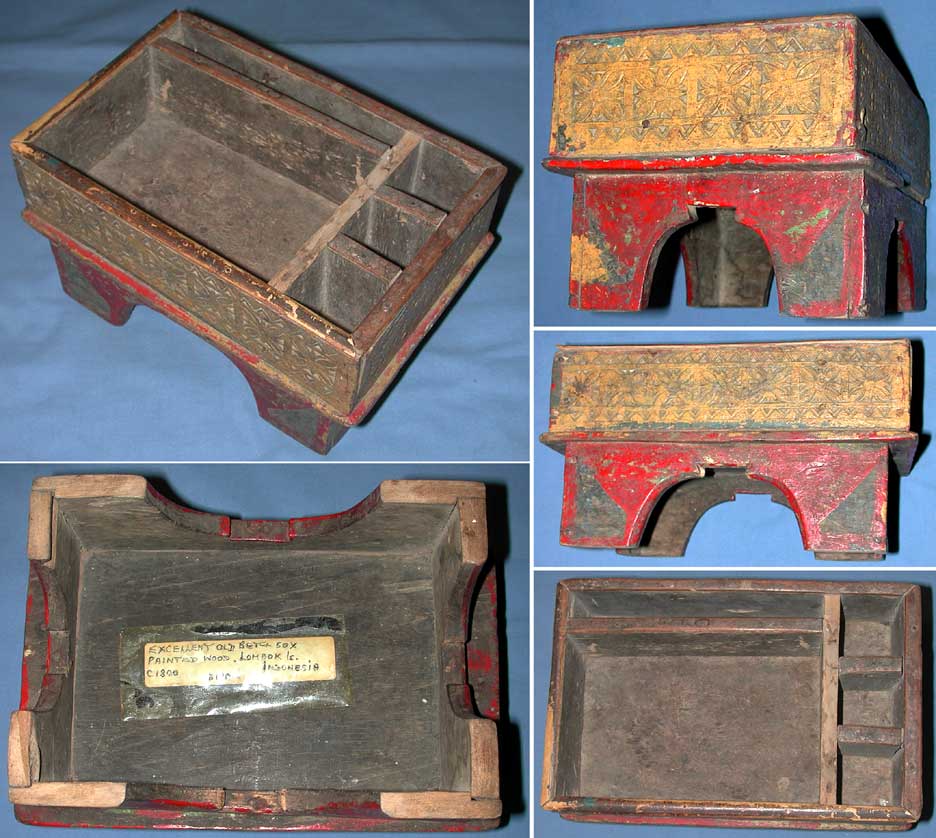Item BR88
This Item was Sold on 25 September
2010 for $41
Similar artifacts for sale are often found on the Asian
Artifacts web page.
Historical Pricing information for this item and similar artifacts
can be found at: Historical Artifact
Prices.
Throughout Asia, it used to be customary for most homes
to have special compartmentalized boxes or trays that were
used to hold the various materials used to make fresh betel
nut quids. A typical box would have separate compartments
for sliced betel nuts, fresh betel leaf and various spices
such as cardamom, fennel, saffron and lime powder. When
guests would visit, they would be presented with a fully
stocked box with all the makings of a tasty betel chew.
These rustic, antique betel boxes are part of an age-old
custom and make for a great conversation piece. Betel nut, for those unfamiliar, is a mild stimulant that
is chewed throughout the Asian continent. The almost
ceremonial and habitual chewing of the betel nut usually
involves four ingredients: areca nut (bunga), fresh pepper
leaves (buyo), powder lime (apug), and damp tobacco leaves.
Slaked lime (Calcium Hydroxide) is used to release the
alkaloid in the Betel Nut. This old Betel Nut box or serving container was purchased
in Indonesia more than 30 years ago by a friend who
travelled extensively throughout that region and had a fine
eye for antiquities. This Betel Box is very old and is
ornately decorated around the perimeter with wood carvings.
It is painted yellow and red on the sides. The pieces of
wood are held together by very thin nails. There is a vendor
tag on the underside that says "Excellent Old Betel Box
Painted Wood. Lombok Is. Indonesia c1800 $120". Betel nut
boxes can still be found in Indonesia, but early 19th
century examples like this one have become increasingly
scarce and hard to come by. The width is 25 cm. The depth is 16 cm. The height is 15
cm. The depth of the tray compartments is 6 cm. The box
weighs 718 grams. This box is in very good condition, but
there are a few small chips, faded paint, etc. as expected
for such an old artifact.

How to Order | Back to: Asian Artifacts | Collectable Artifacts | Historical Artifact Prices | contact: Ted Bailey